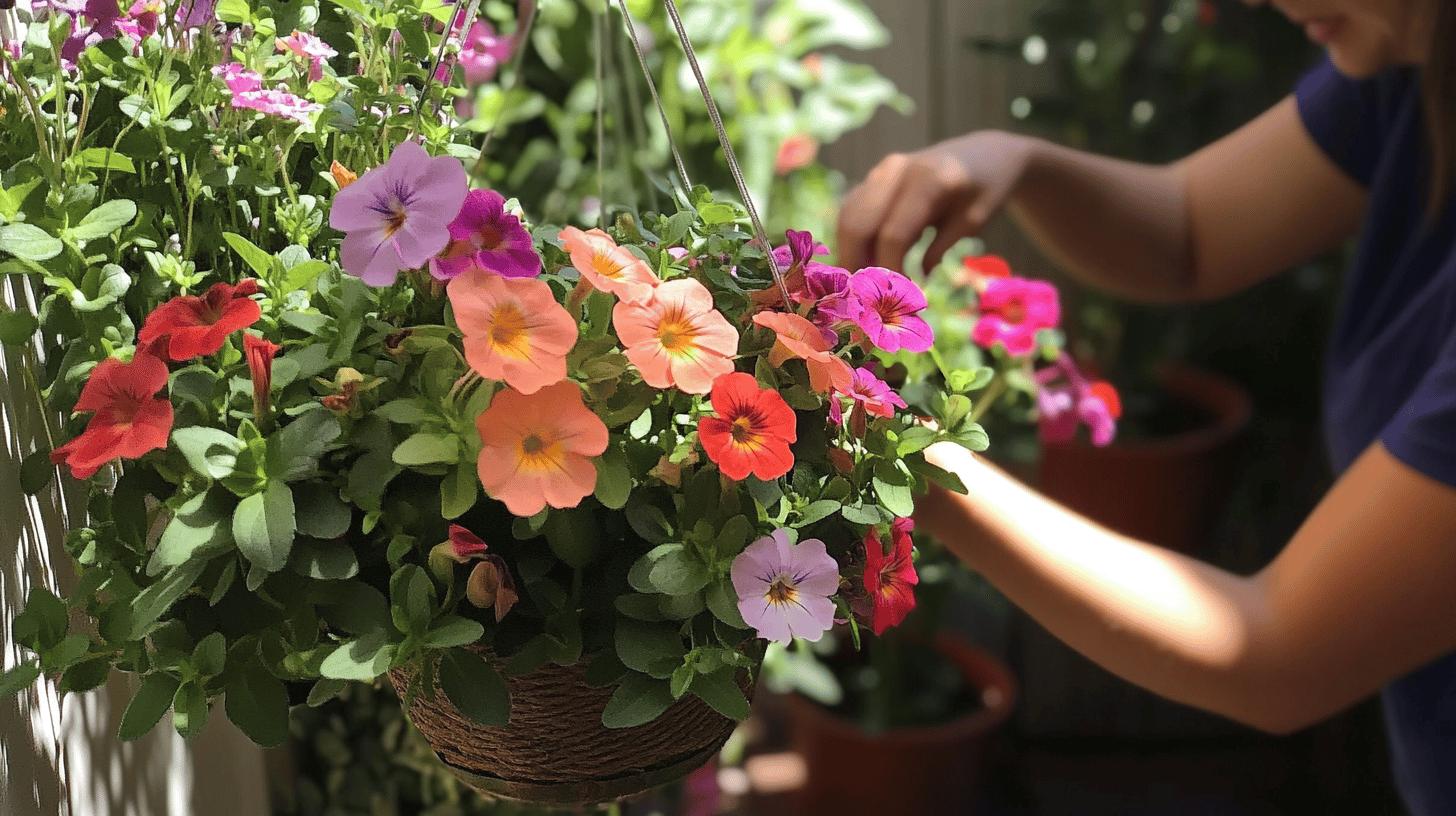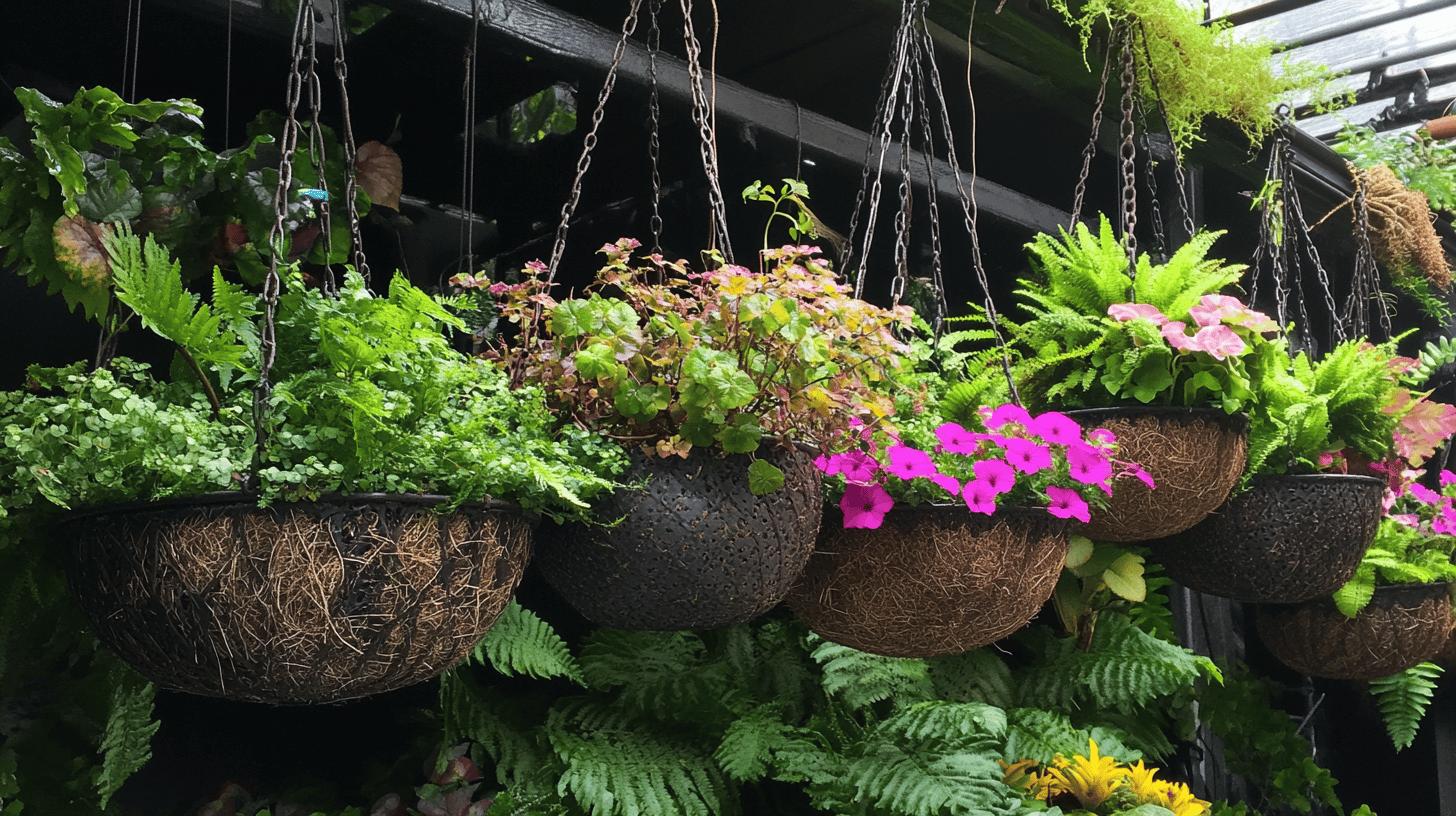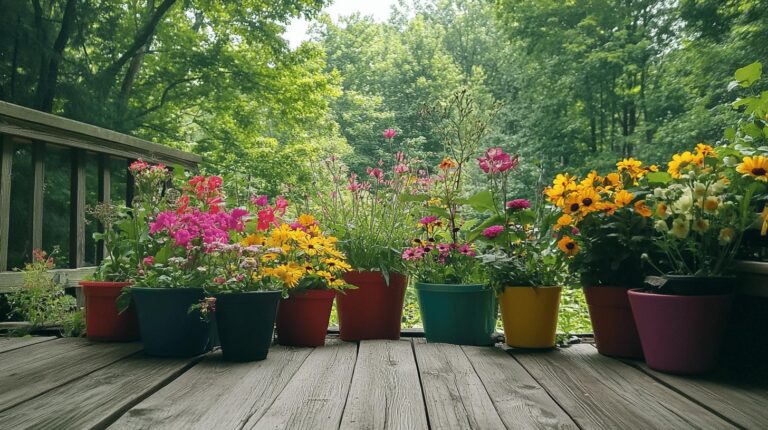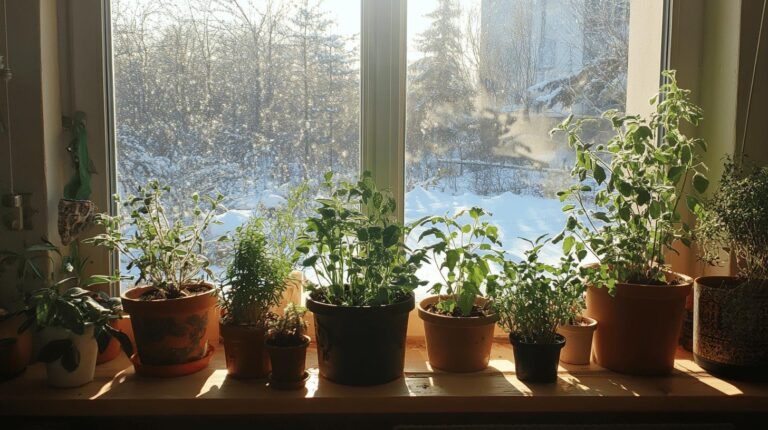Transform Your Outdoor Space with Hanging Baskets: A Complete Guide
Hey there, fellow garden enthusiasts! Have you ever walked past a house with gorgeous cascading flowers spilling from hanging baskets and thought, “I wish my garden looked that magical”? Well, you’re in luck because I’m about to share everything you need to know about creating your own stunning hanging basket display. Trust me, there’s nothing quite like the joy of watching your suspended garden flourish and transform your outdoor space into a living work of art.
Why Hanging Baskets Are a Game-Changer
Let’s talk about why hanging baskets are such a fantastic addition to any garden. First off, they’re incredibly versatile – whether you’ve got a tiny apartment balcony or a sprawling backyard, these beauties can fit just about anywhere. They’re perfect for adding that extra pop of color above eye level, creating what I like to call a “vertical garden paradise.”
But here’s what really makes them special: hanging baskets let you garden without taking up precious ground space. Living in a smaller home myself, I’ve discovered that going vertical with hanging baskets has doubled my gardening space. Plus, they’re amazing for keeping plants safe from curious pets and garden pests – a win-win in my book!
Choosing Your Perfect Plants

Now, let’s dive into the fun part – picking out your plants! The key to success is matching plants to your specific conditions. Here’s my tried-and-true guide for both sunny and shady spots:
Sun-Loving Superstars
If you’ve got a spot that gets plenty of sunshine (think 6+ hours of direct sunlight), these plants will absolutely thrive:
- Petunias: These classic beauties come in every color imaginable and bloom their hearts out all summer long. I especially love the Wave series for their incredible trailing habit and weather resistance.
- Geraniums: Talk about reliable! These sturdy plants pump out flowers constantly and can handle a bit of neglect (we’ve all been there, right?).
- Calibrachoas (Million Bells): Think of these as petunias’ adorable little cousins. They’re covered in tiny, vibrant flowers and don’t need deadheading – perfect for busy gardeners.
- Verbena: These produce delicate clusters of flowers in gorgeous jewel tones and are absolute butterfly magnets.
- Lantana: If you live somewhere hot, lantana is your best friend. It actually seems to enjoy the heat and drought!
Shade-Loving Stars
Got a shadier spot? No problem! These plants will flourish with less sun (2-4 hours of filtered light):
- Ferns: Boston ferns, in particular, create the most amazing fountain of green fronds. They’re perfect for adding that lush, tropical feel.
- Impatiens: These flowering champions will give you non-stop blooms in the shade. The new Bounce series is especially resistant to disease.
- Begonias: Both tuberous and fibrous types work beautifully in hanging baskets. The dragon wing varieties are particularly stunning.
- Fuchsias: These exotic-looking flowers are like nature’s jewelry, dangling delicately from the basket.
- Coleus: Who needs flowers when you’ve got leaves this colorful? Modern varieties come in mind-blowing color combinations.
By selecting plants suited to the light conditions of your space, you can create hanging baskets that not only look beautiful but also thrive with minimal intervention. Whether you’re looking to add a splash of color to a sunny balcony or bring some lush greenery to a shaded corner, choosing the right plants is the first step to success in backyard gardening with hanging baskets.
Maintaining Your Hanging Masterpiece

Alright, let’s talk about keeping your hanging baskets looking their absolute best. I’ll be honest – they do need a bit more attention than ground-planted flowers, but I promise it’s worth it!
Water Wisdom
Here’s something I learned the hard way: hanging baskets dry out faster than regular garden beds. Think about it – they’re suspended in the air, catching breezes from all directions. During hot summer days, you might need to water daily, sometimes even twice a day. Here’s my watering routine:
- Morning watering is best – it gives plants time to dry before evening
- Water until you see it running out the drainage holes
- If water runs straight through without soaking in, try watering in stages, waiting a few minutes between each pour
- Consider installing a drip irrigation system if you’re often away
Feeding Your Flowers
Hungry plants are sad plants, and hanging basket residents are particularly voracious eaters. I use a water-soluble fertilizer with a 1:2:1 ratio of nitrogen, phosphorus, and potassium every two weeks during the growing season. Pro tip: I mark my calendar with feeding days to stay on track!
Regular Maintenance Routine
Here’s my weekly maintenance checklist that keeps my baskets looking their best:
- Deadhead spent blooms (unless you’re growing self-cleaning varieties)
- Check for signs of pests or disease
- Trim any overly long trails to encourage bushier growth
- Remove any dead or yellowing leaves
- Rotate baskets a quarter turn to ensure even growth
Seasonal Success Strategies

One of the coolest things about hanging baskets is that you can switch them up as the seasons change. Here’s my year-round planning guide:
Spring (March-May)
Start with cold-hardy options like pansies and violas. They can handle those surprise late frosts and give you early color. I also love adding some trailing sweet peas for their incredible fragrance.
Summer (June-August)
This is when your sun-lovers really shine. Mix upright plants like geraniums with trailing varieties such as bacopa or lobelia for that perfect “thriller, filler, spiller” effect.
Fall (September-November)
Transition to chrysanthemums and ornamental kale as temperatures cool. Add some trailing ivy for structure that’ll last through winter.
Winter (December-February)
Focus on evergreen options like winter pansies and ivy. In milder climates, you can even grow some ornamental cabbage for winter interest.
Choosing the Right Materials for Hanging Baskets

Let’s talk about the actual baskets and materials you’ll need:
Traditional Options
- Metal frames with coconut fiber liners: These are my go-to for their natural look and excellent drainage
- Moss-lined baskets: Beautiful but need more frequent watering
- Plastic-lined wire baskets: Practical and water-retentive
Eco-Friendly Alternatives
I’m a big fan of sustainable gardening, so here are some green options I’ve tried:
- Repurposed wooden containers: Old wooden boxes can be transformed into unique hanging planters
- Recycled plastic containers: With some creative drilling for drainage and hanging points
- Biodegradable coir baskets: These eventually break down but last several seasons
Common Challenges and Solutions
Every gardener faces some hurdles, but here’s how to handle the most common ones:
Drought Stress
- Solution: Add water-retaining crystals to your potting mix
- Install a self-watering system
- Use larger baskets that hold more soil and retain moisture better
Wind Damage
- Choose wind-resistant plants for exposed locations
- Install brackets that keep baskets closer to the wall
- Use sturdy chains or hanging systems rated for outdoor use
Uneven Growth
- Rotate baskets weekly
- Trim trailing plants to encourage bushier growth
- Ensure all sides receive adequate light
Remember, gardening is all about learning and experimenting. Don’t be afraid to try new combinations and techniques – that’s half the fun! With these tips and a little patience, you’ll be well on your way to creating stunning hanging basket displays that’ll make your neighbors stop and stare (in a good way, of course!).
Happy gardening, friends! Let me know in the comments if you have any questions or your own hanging basket tips to share. I’d love to hear about your successes and help troubleshoot any challenges you’re facing.
Your Questions Answered
What is the best low maintenance plant for hanging baskets?
A: For low maintenance, consider succulents like the Burro’s Tail. They’re drought-tolerant and require less frequent watering, offering lush greenery with minimal effort.
What month is best to plant hanging baskets?
A: Early spring is ideal for planting hanging baskets, allowing plants to establish as the weather warms. This timing ensures vibrant displays by summer.
What are the easiest outdoor hanging plants to keep alive?
A: Petunias, fuchsias, and geraniums are hardy choices. They thrive outdoors with regular watering, ample sunlight, and basic care.
What are the disadvantages of hanging baskets?
A: Hanging baskets can dry out quickly, requiring frequent watering. They may also need more regular feeding due to limited soil nutrients. Wind exposure can damage some delicate plants.
Where can I find large or extra-large outdoor hanging planters?
A: Large and extra-large outdoor hanging planters are available at garden centers and online retailers. Home improvement stores like Home Depot also carry various sizes.
How can I find backyard gardening hanging baskets for sale near me?
A: Check local garden centers, nurseries, or home improvement stores. You can also search online for retailers offering local delivery or pickup options.






